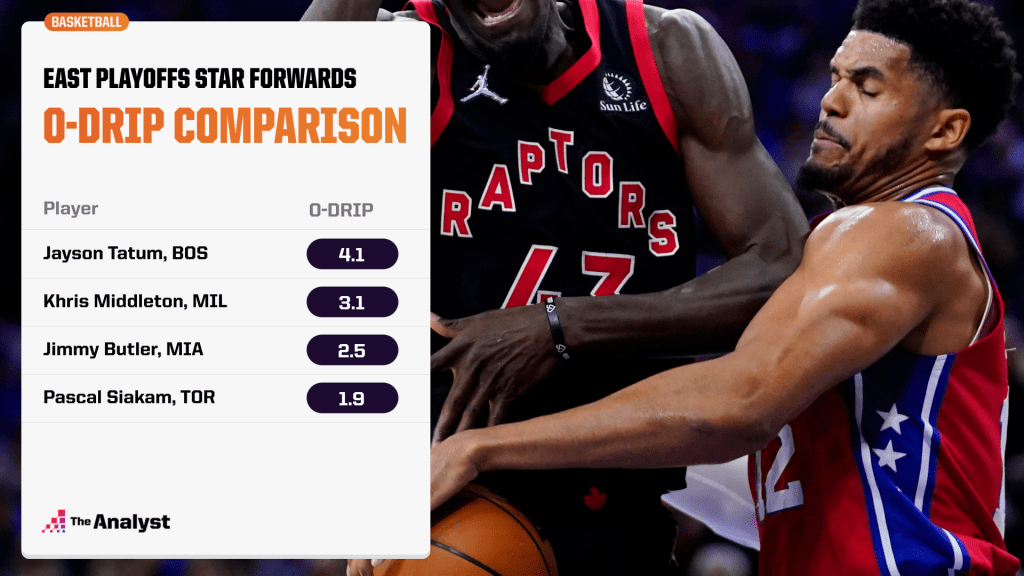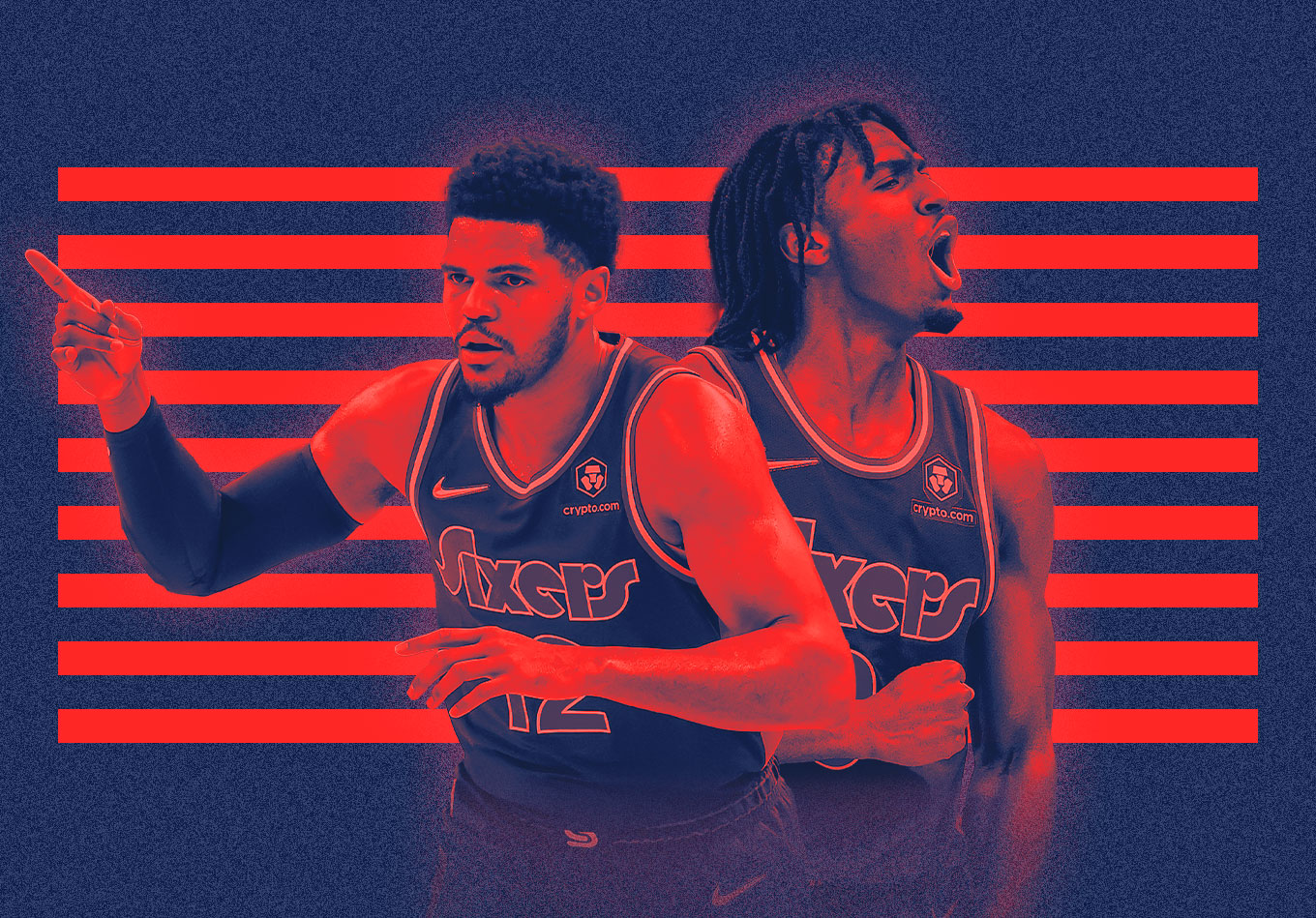Ever since LeBron James teamed up with Chris Bosh and Dwayne Wade to form a Big 3 in Miami, practically every NBA team’s championship prospects have been measured by the merit of its three best players.
Now, let us be the first to tell you that team building is far more of a nuanced science than merely counting the number of All-Star caliber players a roster boasts on its depth chart. But even with that in mind, it’s true that every Batman and Robin duo is better off with a worthy Oracle flanking it from the watchtower.
In Philadelphia, with the exception of the controversial playoff history of 76ers’ resident Robin (or is James Harden actually Batman in this analogy?), arguably no quandary loomed larger over the team’s shoulders entering this postseason than the question of who will fill the void as the team’s clear-cut third-best player.
And what do you know, two games into their series with the Toronto Raptors, the 76ers not only have an Oracle but a Commissioner Gordon as well.
Tyrese Maxey
Maxey has been a contender in the NBA Most Improved Player race since the very beginning of the 2021-22 season. But even then, it was clear that he was punching above his weight class by attempting to moonlight as a primary initiator on a team with title aspirations.
However, with Ben Simmons away from the team and adequate reinforcements yet to arrive, Maxey was forced into a suboptimal role.
Then, Harden came to town.
Since Harden’s arrival in Philadelphia, the second-year jitterbug has been able to transition from his overburdened play-initiating role to a far more manageable play-finishing position.
In this series in particular, the 76ers have been able to take advantage of the Raptors’ tendency to overload and over help on the strong side of the ball by having Harden draw the defense in and fling the ball over to the cheating defenders’ man (often times Maxey).
From there, Maxey can operate on a bent floor, which has produced some highly equitable offensive outcomes thus far.
Despite their abundance of length and athleticism at the forward position, Toronto lacks anyone in the backcourt fast enough to keep up with Maxey’s supersonic speed. And if the Raptors sell out to close off his driving lanes, he can burn them over the top with a barrage of 3-pointers that would even portend well in Dallas.
Since (roughly) around the time of Harden’s arrival, there’s been a notable increase in variables that are typically synonyms with off-ball usage (top four) and a significant drop in measurements of ball-handling load (bottom two) for Maxey.
Tyrese Maxey Pre/Post All-Star Break Splits
| Category | Pre-All-Star Break | Post-All-Star Break |
|---|---|---|
| % Shots 0-2 Dribbles | 48.4% | 64.3% |
| % Open/Wide Open Shots | 48.8% | 58.4% |
| Catch and Shoot 3PA | 1.9 | 2.8 |
| Catch and Shoot 3PA % | 38.5% | 54.4% |
| Touches Per Game | 84.8 | 65.5 |
| Time of Possession Per Game (Min) | 6.6 | 4.3 |
His decreased on-ball volume makes his current repetitions look like a James Cameron picture – well thought out with plenty of time to prepare in-between installments.
Through two games, Maxey is shooting 10 of 13 (76.9%) on shots that require three or more dribbles (these are generally scored as self-generated attempts). Since Maxey is no longer relied on as the primary driver of the offense, he can pick and choose his unassisted projects as he sees fit, which increases his likelihood of success.
Even with all the benefit’s he reaps from Harden, Maxey’s relationship with the future Hall of Famer is more symbiotic than parasitic.
While Harden bears the brunt of playmaking duties, Maxey offers a change of pace to his partner’s more lulling and meticulous approach. He’s the speed back in Philadelphia’s backfield, ready to boost the offense’s heart rate at a moments notice.
This season, Maxey ranked in the 86th percentile in transition efficiency. And so far this postseason, Maxey’s 10 transition possessions have produced 2.00 points per possession – the equivalent of a 200 offensive rating (and just a notch below the Warriors’ new Death Lineup).
Tobias Harris
Over the last two games, Harris has also been sizzling. Like Maxey, Harris has thrived as a connector and finisher with his team posting a 161.9 offensive rating in the 90 possessions he’s been on the floor.
However, it’s been what he’s doing on the defensive end of the floor that has really stood out.
Outside of the bigs, only Danny Green and Matisse Thybulle have a higher defensive DRIP (D-DRIP) projection than Harris (minimum 300 minutes played). And while Green and Thybulle are vastly superior defenders, they’re both crippling liabilities on the offensive end of the floor at this stage in their respective careers. This means Harris may be the team’s best two-way option on the exterior.
Still, even with Harris’ standing in the team’s D-DRIP hierarchy, he’s hardly what you would call a great defender, grading a measly plus-0.1 in the metric (basically a net neutral). However, he seems hell bent on shedding this label of mediocrity with his recent effort on the court.
His primary opponent thus far has been Pascal Siakam, who shot a cool 55.6% from the floor against him in the regular season. In this series, though, he’s shadowed Siakam for nearly 13 minutes and held him to 5-of-13 shooting (38.5%) during that time. For comparison, Siakam has been 11 for 25 on shots not contested by Harris (44%).
Siakam is a renowned isolationist (third in the league in frequency). This affinity plays right into Harris’ wheelhouse as he places in the 70th percentile in defending this play type.
The key in this matchup for Harris has been his ability to leverage his strong frame to stall Siakam’s drives/spin moves and throw his shot attempts off balance in the process.
And for those of you thinking that Siakam is so skinny, it can’t be that hard to stop him in his tracks. Watch these two plays.
- First Clip: Siakam rams himself straight into Joel Embiid’s chest with just enough torque to force him off his feet momentarily.
- Second Clip: Only 40 seconds later, Siakam tries to sweep Harris off his feet too, but Tobias stands his ground and the only one being swept off his feet is Siakam.
Now, this isn’t an attempt to persuade you that Harris is somehow stronger than Embiid (few people in human history can stake such a claim successfully), it’s simply a demonstration of his physical tools as a defender.
Harris, unlike someone like Trae Young, doesn’t have a hard cap on his defensive potential because of his physical dimensions. If Harris is locked in, he has the tools to be a solid positive on that end of the court.
Here’s a great example of a fully locked-in Harris highlighted by our very own Jackson Frank:
Siakam is a great two-way foe to make your bones against, but other worthy adversaries like Jimmy Butler, Jayson Tatum and Khris Middleton still lie in Philadelphia’s path to the NBA Finals.
More likely than not, it will be up to Harris to keep these star forwards from completely blowing the roof off the Sixers’ title hopes.

With all this said, it’s highly improbable that Maxey averages 30.5 points on 81.9% true shooting for the entirety of the playoffs, or that Harris continues rendering All-Stars to below 40% shooting from the field.
But both players have been stepping up in big ways and if they can keep rising to the occasion alongside their superstar teammates, that may just be enough to bring a title home to the City of Brotherly Love.
Graphic design by Matt Sisneros.
